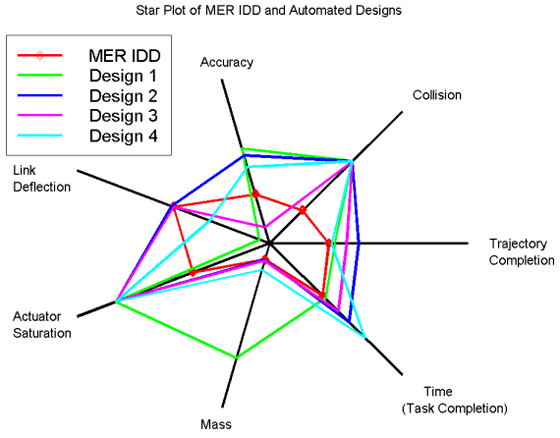Direct link to map: http://upload.wikimedia.org/wikipedia/commons/0/09/MER_Star_Plot.gif
Star plots allow you to compare different types of data for various experiments or designs. The radius of the star or design represents different characteristics. The center of the plot represents the most desirable result. This graph illustrates the fact that improvements in one metric often come at the expense of others.
















































